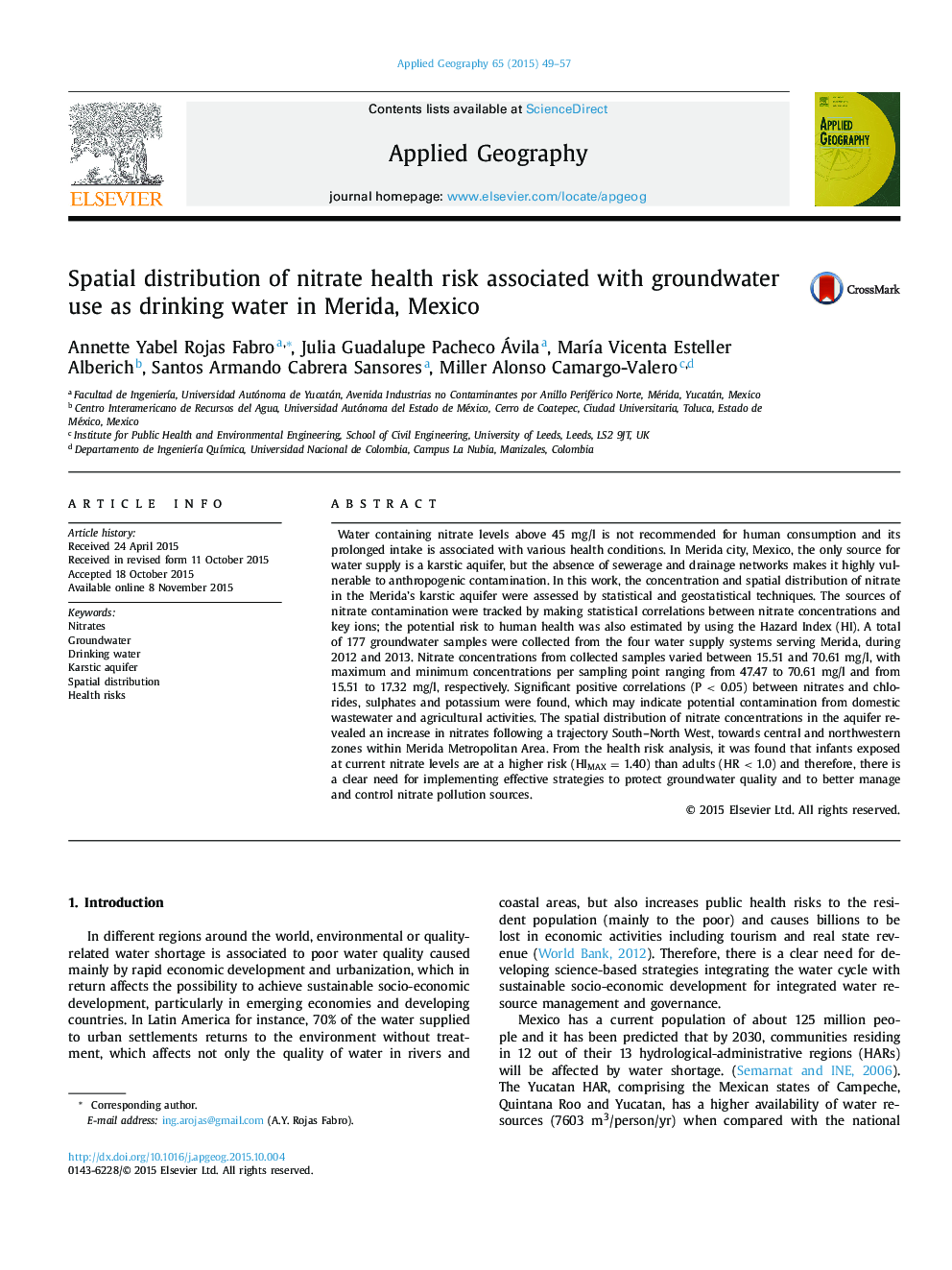| کد مقاله | کد نشریه | سال انتشار | مقاله انگلیسی | نسخه تمام متن |
|---|---|---|---|---|
| 83184 | 158694 | 2015 | 9 صفحه PDF | دانلود رایگان |
• Spatial distribution of health risk by nitrates in drinking water was evaluated.
• Nitrate sources were identify through linear regressions with other ions.
• Regionalization is important to identify the nitrate hot spots in water supply.
• Nitrates showed the higher concentrations associated to anthropogenic activities.
• Nitrates in drinking water showed a high health risk in bottle-fed infants.
Water containing nitrate levels above 45 mg/l is not recommended for human consumption and its prolonged intake is associated with various health conditions. In Merida city, Mexico, the only source for water supply is a karstic aquifer, but the absence of sewerage and drainage networks makes it highly vulnerable to anthropogenic contamination. In this work, the concentration and spatial distribution of nitrate in the Merida's karstic aquifer were assessed by statistical and geostatistical techniques. The sources of nitrate contamination were tracked by making statistical correlations between nitrate concentrations and key ions; the potential risk to human health was also estimated by using the Hazard Index (HI). A total of 177 groundwater samples were collected from the four water supply systems serving Merida, during 2012 and 2013. Nitrate concentrations from collected samples varied between 15.51 and 70.61 mg/l, with maximum and minimum concentrations per sampling point ranging from 47.47 to 70.61 mg/l and from 15.51 to 17.32 mg/l, respectively. Significant positive correlations (P < 0.05) between nitrates and chlorides, sulphates and potassium were found, which may indicate potential contamination from domestic wastewater and agricultural activities. The spatial distribution of nitrate concentrations in the aquifer revealed an increase in nitrates following a trajectory South–North West, towards central and northwestern zones within Merida Metropolitan Area. From the health risk analysis, it was found that infants exposed at current nitrate levels are at a higher risk (HIMAX = 1.40) than adults (HR < 1.0) and therefore, there is a clear need for implementing effective strategies to protect groundwater quality and to better manage and control nitrate pollution sources.
Journal: Applied Geography - Volume 65, December 2015, Pages 49–57
